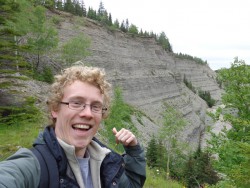AMGC Seminar

Understanding rapid climate variations during the Late Ordovician (~450 Ma) in terms of astronomical forcing
Matthias Sinneseal
The Late Ordovician (450 million years ago) is characterized by major glaciations and a mass extinction event. The CO2 concentrations were up to ten times higher than today and there was a virtual lack of vegetation on the continents. Most of the land masses were located south of the equator and a gigantic ocean occupied the Northern Hemisphere. This specific setting offers the potential to study extreme climatic conditions, rapid transitions from warm to cold climate, and the functioning of a climate system without the CO2 sink effect provided by continental vegetation.
It is well known from the Quaternary (last 2.6 million years) that astronomical forcing has a significant impact on the evolutions of the cryosphere and the global climate system. We hypothesize that astronomical forcing also explains main features in the Late Ordovician climatic events. We propose to test this hypothesis with systematic high-resolution cyclostratigraphic research on geochemical and geophysical properties for different paleogeographical settings. Moreover, successful cyclostratigraphical results will lead to the construction of a temporal framework, potentially with a high precision – and the application of an astrochronological time frame that will be complementary to current available time constrains derived from radioisotopic dating and biostratigraphy.